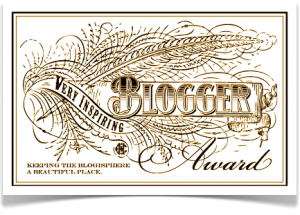
By TRACY SHAWN, M.A.
(This article was first published in Psychcentral.com)
Often, stress, disappointments, and mundane realities of everyday life plague our inner worlds so much that it’s difficult to experience positive emotions such as joy, peace, and spontaneity. Unfortunately, it becomes a vicious cycle.
The negative emotions build up even more, sapping our mental and physical energies to the point where it’s a challenge just to get through our daily routines. Our bodies become just as blunted as our spirits. Happily, though, there are three easy and inspiring activities that can help us beat the blues and increase our general well-being.
View art. Professor Semir Zeki, a neurobiologist at the University College London, conducted a series of experiments about what happens to the pleasure centers of the brain when people view works of art. After scanning volunteers’ brains while they gazed at a variety of masterpieces, Prof. Zeki noted that there was a definite increase of activity in the pleasure reward centers of the brain.According to science correspondent Richard Alleyne’s May 2011 article in Telegraph.co.uk, viewing art “…triggers a surge of the feel-good chemical, dopamine, into the orbito-frontal cortex of the brain, resulting in feelings of intense pleasure.” Alleyne, who had quoted Prof. Zeki on his studies, also stated that this current research suggests that viewing art can increase general mental health.
Listen to music. There are countless references from centuries past about how music mends our souls. Now science has proven these sentiments to be true. Research conducted at the University of Missouri found that listening to music does lead to more positive feelings. Yuna Ferguson, the study’s lead author, states that participants markedly improved their moods after listening to upbeat music. In a June 2013 Psychology Today article, pharmacist Catherine Ulbricht states that all forms of music may have therapeutic effects. “There is strong scientific evidence supporting the use of music therapy for mood enhancement and anxiety/stress relief, according to Natural Standard research,” Ulbricht said.
Hit the dance floor. Exercise is an overall feel-good remedy. The benefits of physical activity include the reduction of stress, depression, and anxiety. Combine exercise with mood-enhancement music and the brain-stimulating steps of dances such as salsa, merengue, and swing, and you’ve got an uplifting activity. According to Jeannette Thornton, M.D., dancing “…releases pleasurable brain chemicals that fight against depression and help build self-confidence and improves self-esteem.” Also, dancing can be a lot more fun and socially engaging than other forms of exercise, which encourages the joy of spontaneity and decreases feelings of isolation and depression.
Yes, when you are feeling anxious, depressed, or stressed, it can be challenging to not only make the time, but also gather up enough energy to engage in art, music, and dance. Yet it can be done. And in so doing, you may be rewarded with a surprisingly wonderful boost to your emotional health. So next time you’re down, take a peaceful stroll through a museum or gaze at the pages of an art book to boost the feel-good chemicals in your brain.
For another healthy and positive mood-enhancement activity, go to a concert or simply crank up your favorite music while driving or cleaning house. And to help release even more of your pleasurable brain chemicals, boogie on down to the dance floor. In fact, why not reward yourself with a whole “mental-health” Saturday to take in some art, listen to your favorite music, and then swing dance your way out of the blues? By Sunday morning, you may be that much happier for it.
Tracy Shawn lives and writes on the Central Coast of California. Her award-winning novel, The Grace of Crows, is about how an anxiety-ridden woman finds happiness through the most unexpected of ways—and characters. Dubbed a “stunning debut novel” by top 50 Hall of Fame reviewer, Grady Harp, The Grace of Crows has also been hailed as an accurate portrayal of generalized anxiety disorder and a healing opportunity to the reader.
